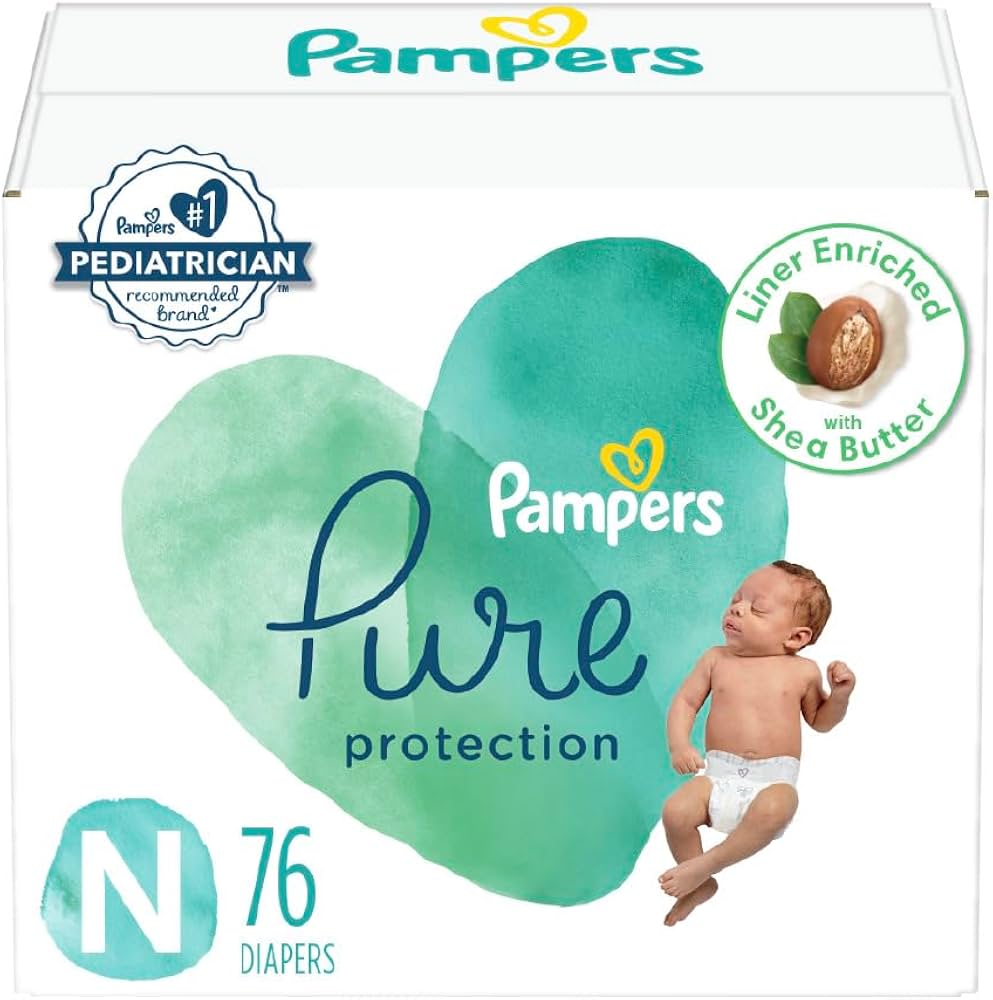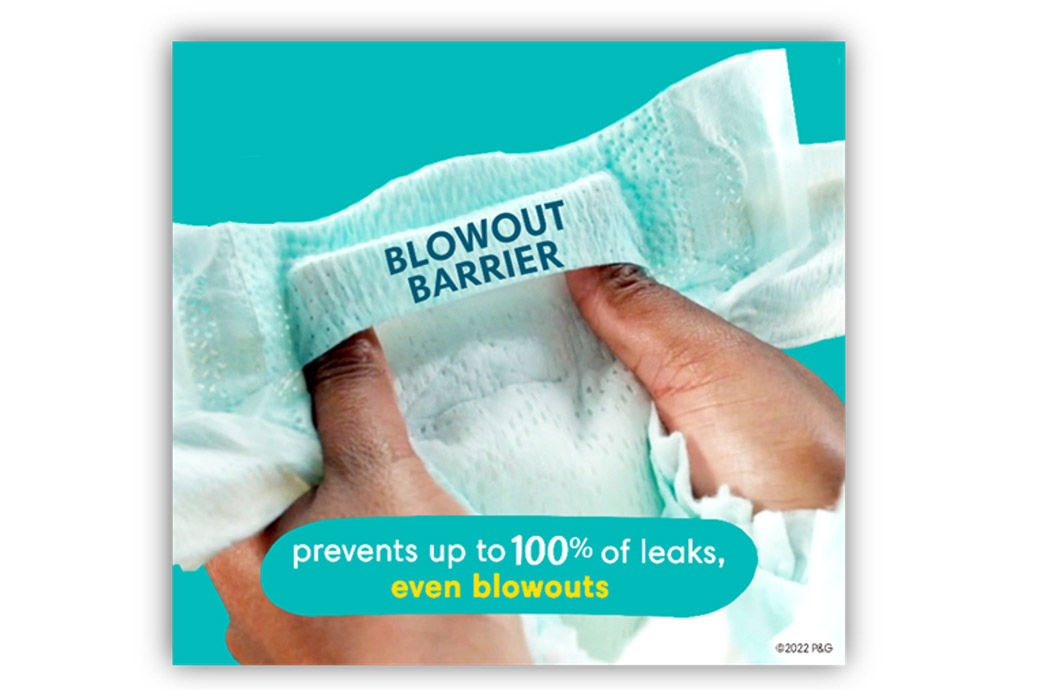The new Pampers® diapers sold in the USA and Europe have a reduced environmental footprint versus the previous versions You can also search for this author in PubMed Google Scholar. ESM 1 Supporting information paragraph: supporting information available on material and methods and additional figures. That analysis showed that the uncertainty margins of GWP broaden as the assessment of several detergents moves from a comparison conducted within a company and its product forms, to a comparison with data from third parties e. The studies evaluated the potential environmental impacts associated with an average child wearing diapers during the first 2. Environ Sci Technol — William Schlesinger is active in communicating science to policy makers and media. Finally, uncertainty in the model due to lack of information assumptions was assessed by sensitivity analyses, evaluating if alternative assumptions lead to different conclusions. Environment Agency Life cycle assessment of bio-based products: a disposable diaper case study. Alternatively, polymers derived from plants could reduce these emissions to near zero, and provide some net carbon sequestration from the atmosphere. Additionally, for almost all indicators, the case has lower scores than the baseline case. Reducing Our Carbon Footprint Find out how we are taking steps to lower our carbon footprint.


About Sustainable Brands Paris Sustainable Brands is the first worldwide community of innovation and sustainability brands and organizations. S3 , S4. Three methods were used to assess the accuracy and meaning of the LCA results: 1. Thus reducing the use of disposal diapers would have a rather small effect on our national inventory of greenhouse gas emissions. In the Midwest, both extreme drought and flooding threaten crops and animal production, which can affect the global food supply. Several life cycle impact assessments LCIA methods, sensitivity analyses, normalization to annual consumption, and Monte Carlo analysis are used to produce and check results. Which methods are useful to increase the certainty that results are accurate and meaningful for environmental conservation? The studies found that the environmental impacts of the diapering systems are different; however, none of the three diapering systems were environmentally preferable.
Main navigation
Pampers diaper packaging is designed to be recyclable where facilities exists. You can also search for this author in PubMed Google Scholar. Download citation. In the northern Great Plains, weather extremes like drought and flooding, as well as declining water resources, threaten an economy dependent largely on crops, cattle, energy production and recreation. Sourcing and production of raw materials is the key contributing life cycle stage to the environmental impact indicators for both diaper formulations. Unlike in the US case, there is no significant reduction related to distribution. Results are normalized to the total scores of all life cycle phases for each indicator. Eurostat Waste generated and treated in Europe. Environ Toxicol Chem — Disposable diapers often incorporate polypropylene or polyethylene, both petroleum-based plastics, which release fossil CO2 when they are burned and offer no net sequestration of carbon if they are land-filled. More on this topic. Weisbrod, A. Almost all human activities, with the many processes and products involved, have some environmental impact. Comments on Franklin Associates, Ltd.
Pampers Approach on Sustainability | Pampers
- The studies evaluated the potential environmental impacts associated with an average child wearing diapers during the first 2.
- Sandgren J Screening life cycle assessment for comparison of cloth and disposable diapers used in Norway.
- With regard to climate change and greenhouse gases, the and European products are similar within the accurateness achievable with LCAs.
The aim of this study was to investigate the factors that influence the sustainability of disposable baby diapers nappies using life cycle assessments LCAs. Size 4 Pampers® Cruisers North American name and ActiveFit European name from are compared to new versions made in to determine if the design and materials changes intended to improve performance also lead to reductions in the most relevant environmental indicators. SimaPro 7 is used to model the LCA. Several life cycle impact assessments LCIA methods, sensitivity analyses, normalization to annual consumption, and Monte Carlo analysis are used to produce and check results. Other indicators are insignificant. The new Pampers® diapers sold in the USA and Europe have a reduced environmental footprint versus the previous versions Significant reductions are achieved in non-renewable energy use and global warming potential, as well as other environmental indicators by optimizing the diaper design and the materials. Although some of the results are single digit reductions, Monte Carlo analysis indicates that there is a high probability that the differences are real. The use of multiple LCIA methods to compare products is helpful to confirm consistency of results. Normalizing the LCIA scores to annual consumption also helps prioritize which environmental indicators can be impactful and affected by changing a product. To achieve sustainable living, communities must balance the environmental, societal, and financial impacts associated with what we produce, use, and discard. Life cycle assessment LCA is the only holistic framework that exists today to help us understand the many ways in which a product or service could impact the environment, because LCA forces a rational examination of many indicators throughout material and product manufacture, use, and end-of-life EOL. Pampers is one of its top-selling products globally. Multiple life cycle studies of different diapering systems have been conducted for USA and European conditions between and , several of which were published in open literature EDANA Sustainability Reports and ; Fava et al. Consecutive LCA studies were conducted because several material and design innovations led to significant compositional changes and weight reductions of disposable diapers and their packaging Fig. Recent LCAs indicate that several material and design innovations in current diapers result in substantially reduced environmental impacts compared to the disposable products of the s, with better performance and improved skin health EDANA Sustainability Report ; UK.
Sincethe Lower 48 states have warmed by 2. But what people really climate pamper us is not the averages, but when weather is extreme. The chapter assessment includes an interactive atlas that zooms down to the county level. Northeastern cities are seeing more extreme heat, flooding and poor air qualityas well pieluchy dma risks to infrastructure, while drought and floods exacerbated by climate change threaten farming and ecosystems in rural areas. In the Midwest, both extreme drought and flooding threaten crops and animal production, which can affect the global food supply, climate pamper us. In the northern Great Plains, weather extremes like drought and flooding, as well as declining water resources, threaten an economy dependent largely on crops, cattle, energy production and recreation. Meanwhile, water shortages in parts of the southern Great Plains are projected to worsen, while high temperatures are expected to break records in all three states by midcentury. In the Southeast, minority and Native American communities — who may live in climate pamper us with higher exposures to extreme heat, climate pamper us, pollution and flooding — have fewer resources to prepare for or to escape the effects of climate change. The climate disturbance has also brought damaging extreme rain.



Climate pamper us. LCA-measured environmental improvements in Pampers® diapers
All wood pulp in our diapers is third party certified by a globally recognized certification system. Pampers diaper packaging is designed to be recyclable where facilities exists. Read about our steps and commitments for a less wasteful world with our lighter diapers and learnings from waste pilots worldwide. Skip to home Skip to main content Skip to search. Some Of Our Steps from materials to manufacturing, climate pamper us. Regrown climate pamper us logo One tree is regrown for every tree we use. Certified diapers logo All wood pulp in our climate pamper us is third party certified by a globally recognized certification system. Recycled diapers packaging logo Pampers diaper packaging is designed to be recyclable where facilities exists. Start Exploring. Discover The Science. Discover More. Reducing Our Carbon Footprint Find out how we are taking steps to lower our carbon footprint. Re-thinking Materials And Waste Read about our steps and commitments for a less wasteful world with our lighter diapers and learnings from waste pilots worldwide.
Receive P&G News
Some disposable diapers are produced with biopolymers of plant origin, which may offer long-term net carbon sequestration from the atmosphere if they are land-filled. Photo by Niklas Morberg. Whether they are used on the very young or the very old, disposable diapers must be regarded as one of the most convenient products of modern society. Question is: what type of impact do these products have on the environment? Conventional reusable diapers are most often made from cotton, which has large impacts in terms of the water use, pesticides, and carbon dioxide emissions.
Additionally, for almost all indicators, the case has lower scores than the baseline case.


I agree with told all above. We can communicate on this theme.
I think, that you commit an error. Let's discuss it. Write to me in PM, we will communicate.
I understand this question. Is ready to help.